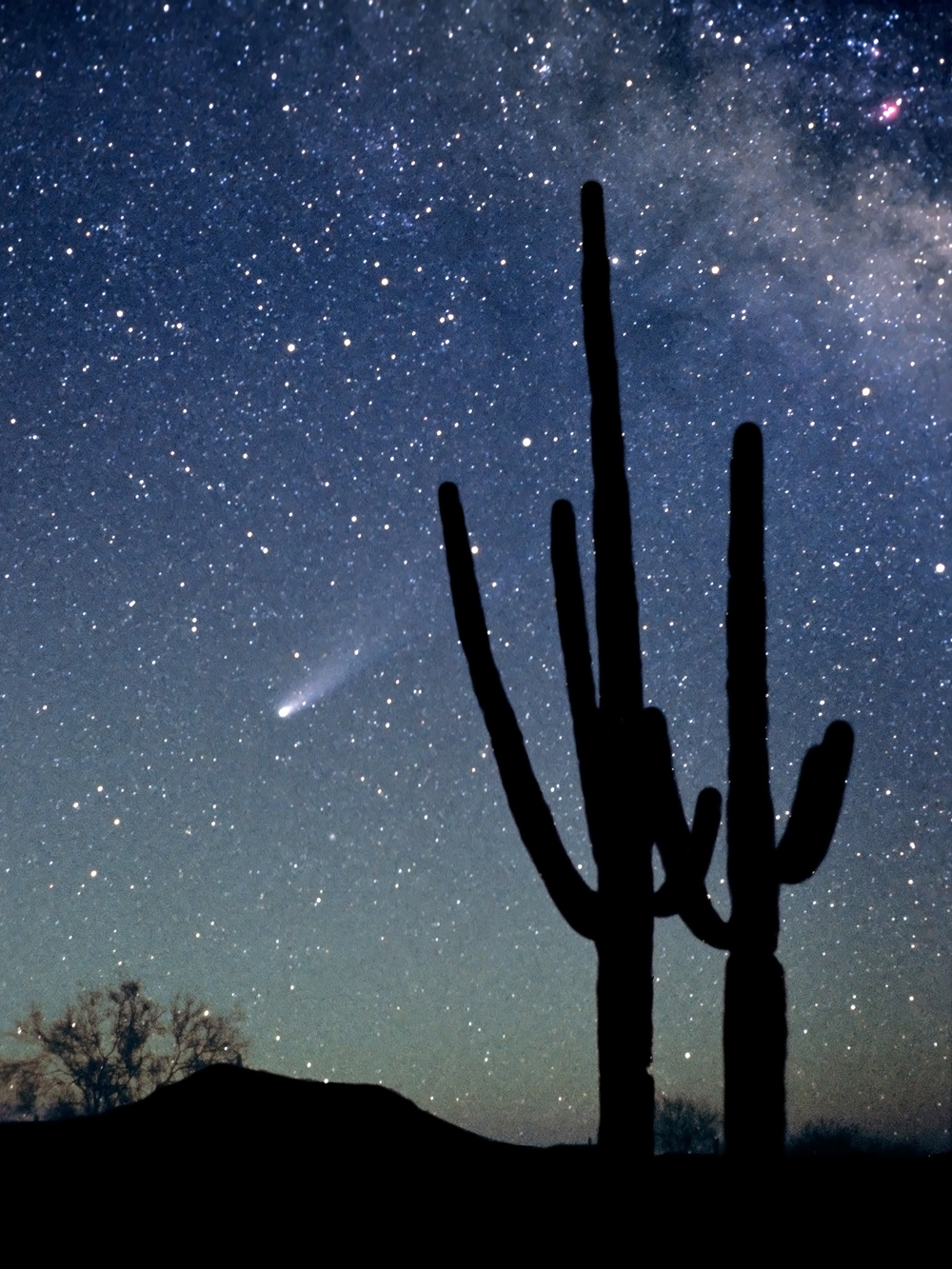
Perihelion: 1986 February 9.46, q = 0.587 AU
Those of us space-minded people who came of age during the middle decades of the 20th Century learned of Comet Halley and its impending return in 1986, and many of us undoubtedly heard stories of its appearance during its excellent return in 1910; my paternal grandmother, an 11-year-old farm girl in Virginia at the time, saw it then. Calculations soon began to reveal, unfortunately, that the viewing geometry in 1986 would be substantially less favorable than it was in 1910, although conversely it would remain viewable for an unusually long period of time.
Astronomers began making recovery attempts as early as 1977, although these were obviously unsuccessful. The comet was finally recovered on October 16, 1982, by a CalTech graduate student, David Jewitt – who has since gone on to become one of the world’s top comet astronomers – and G. Edward Danielson, a staff astronomer at Palomar Observatory in California, using a CCD attached to the Hale 5.1-meter telescope at Palomar. The comet, then slightly over 11 AU from the sun, appeared as a stellar object of 24th magnitude. This, incidentally, was the first time a comet had ever been recovered via CCD imaging, something which is quite routine nowadays.
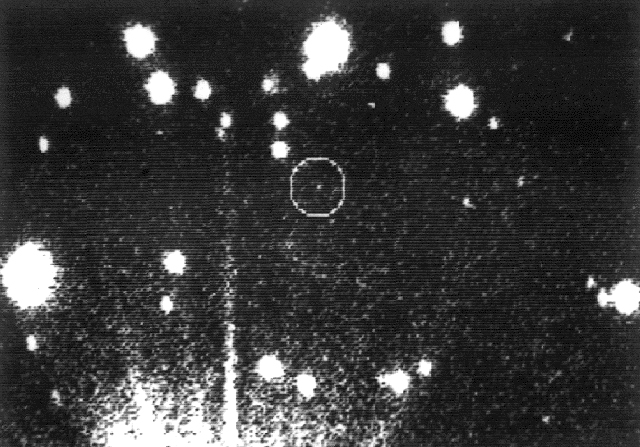
By late 1984 Halley was beginning to exhibit a small coma, and the first gaseous emissions were detected in early 1985. Meanwhile, in late January 1985 amateur astronomer Steve O’Meara, then with Sky & Telescope, successfully obtained the first visual observations of Halley, with a 61-cm telescope at Mauna Kea Observatory in Hawaii; the comet appeared as a stellar object of magnitude 19 ½. These remain the faintest visual observations ever made of a comet.
After being in conjunction with the sun in mid-1985 Halley emerged into the morning sky around August at around 14th magnitude. It brightened rapidly, and became visible to the unaided eye as a 6th-magnitude object around the time of opposition in mid-November. By early January 1986 it had brightened to 5th magnitude and was exhibiting a tail a few degrees long, and by the time it disappeared into evening twilight near the end of that month it had reached 4th magnitude.
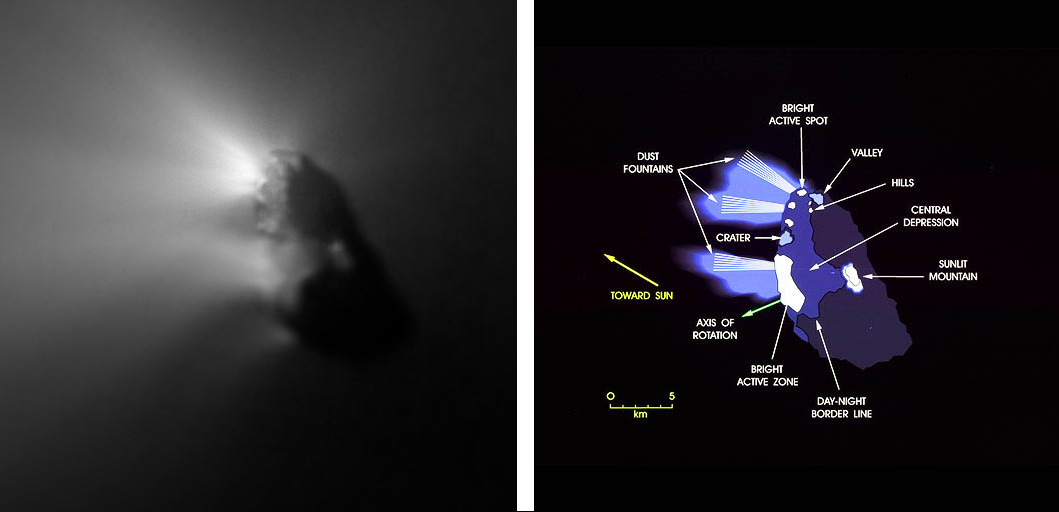
The comet was near conjunction with the sun around the time of perihelion passage in early February, and was near 3rd magnitude when it emerged into the morning sky late that month. Throughout March it remained close to 3rd magnitude, with a bright dust tail that gradually lengthened, to about 8 to 10 degrees by the latter part of that month. Around the time of opposition and closest approach to Earth (0.42 AU) in early April Halley was briefly as bright as 2nd magnitude, however it was moderately deep in southern skies at the time and, moreover, the tail – projected against rich Milky Way star fields – was directed more-or-less away from Earth. As the comet moved over into the evening sky the apparent tail length grew rapidly, to 25 degrees or longer by late April, however the comet itself had faded to 5th magnitude by then and the good views were restricted to dark rural sites. It dropped below naked-eye visibility by around mid-May and the brightness had decreased to about 9th magnitude by the time the comet disappeared into evening twilight shortly after mid-year.
With the dramatic improvements in astronomical instrumentation that had been made over the previous few decades, and recognizing the scientific importance of the impending return of Comet Halley, in the early 1980s the world’s astronomers organized themselves into the International Halley Watch, which was headed by Ray Newburn at the Jet Propulsion Laboratory in California. The astronomers involved with the IHW – which included amateur astronomers from around the world – studied just about every physical aspect of Halley during its return, from studies of its nucleus and near-nucleus environment, all the way out to its outer coma and tail. The results of the various IHW investigations were presented at various conferences, and it’s a fair statement that our knowledge of comets was completely revolutionized by the studies of this object.
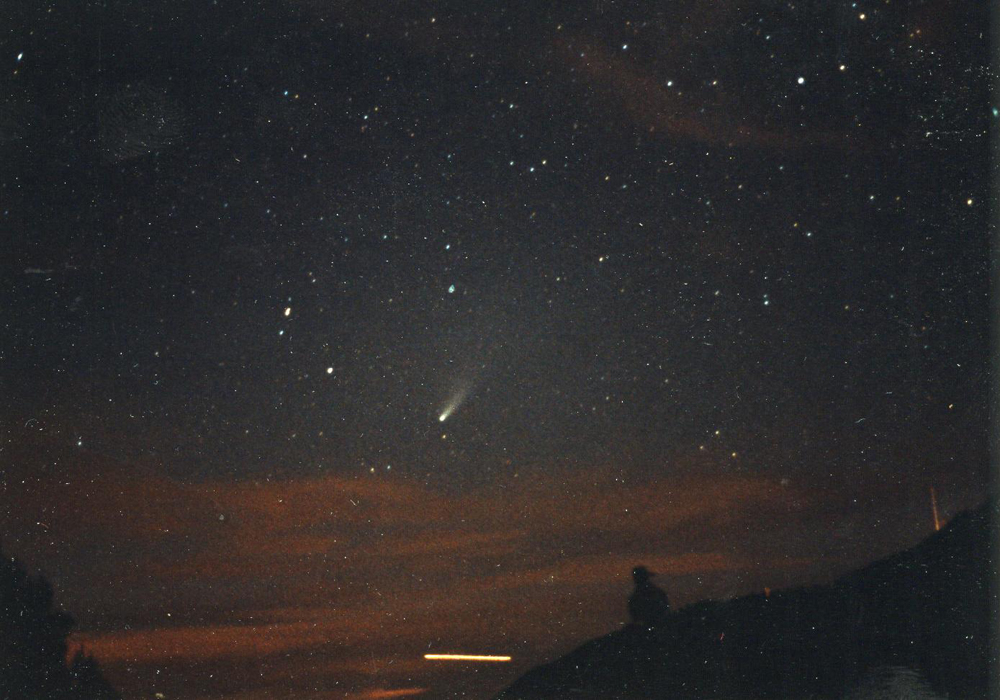
Certainly the most dramatic component of the scientific study of Halley was the series of spacecraft visits launched by several nations. The Japanese probes Sakigake and Suisei made somewhat distant flybys – with Suisei performing important ultraviolet studies of the comet’s environment – and the Soviet Union’s Vega 1 and 2 probes passed within a few thousand km of Halley’s nucleus in early March and returned the first-ever direct images of a comet’s nucleus. (Incidentally, there were no American missions to Halley, although the 20-year-old sun-orbiting Pioneer 7 spacecraft made a distant flyby of it in late March and performed measurements of the interactions between the comet’s ion tail and the solar wind.)
The highlight, of course, was the European Space Agency’s Giotto mission which, utilizing navigational data supplied by the Vega missions – a welcome example of international collaboration in the midst of the Cold War – passed just 600 km from Halley’s nucleus on March 14. The images from Giotto revealed the nucleus as being a dark, oblong, peanut-shaped object some 15 km by 9 km in size, with several active jets, and these images, along with those obtained by the two Vega spacecraft, fully confirmed Fred Whipple’s “icy conglomerate” model of a cometary nucleus (as discussed in last week’s “Special Topics” presentation). Giotto and some of the other missions also detected a strong presence of formaldehyde and other organic compounds – some in the form of polymers – and also small particles that have been dubbed “CHON” (for carbon, hydrogen, oxygen, and nitrogen), the relative compositions of which are consistent with the composition of interstellar dust clouds.
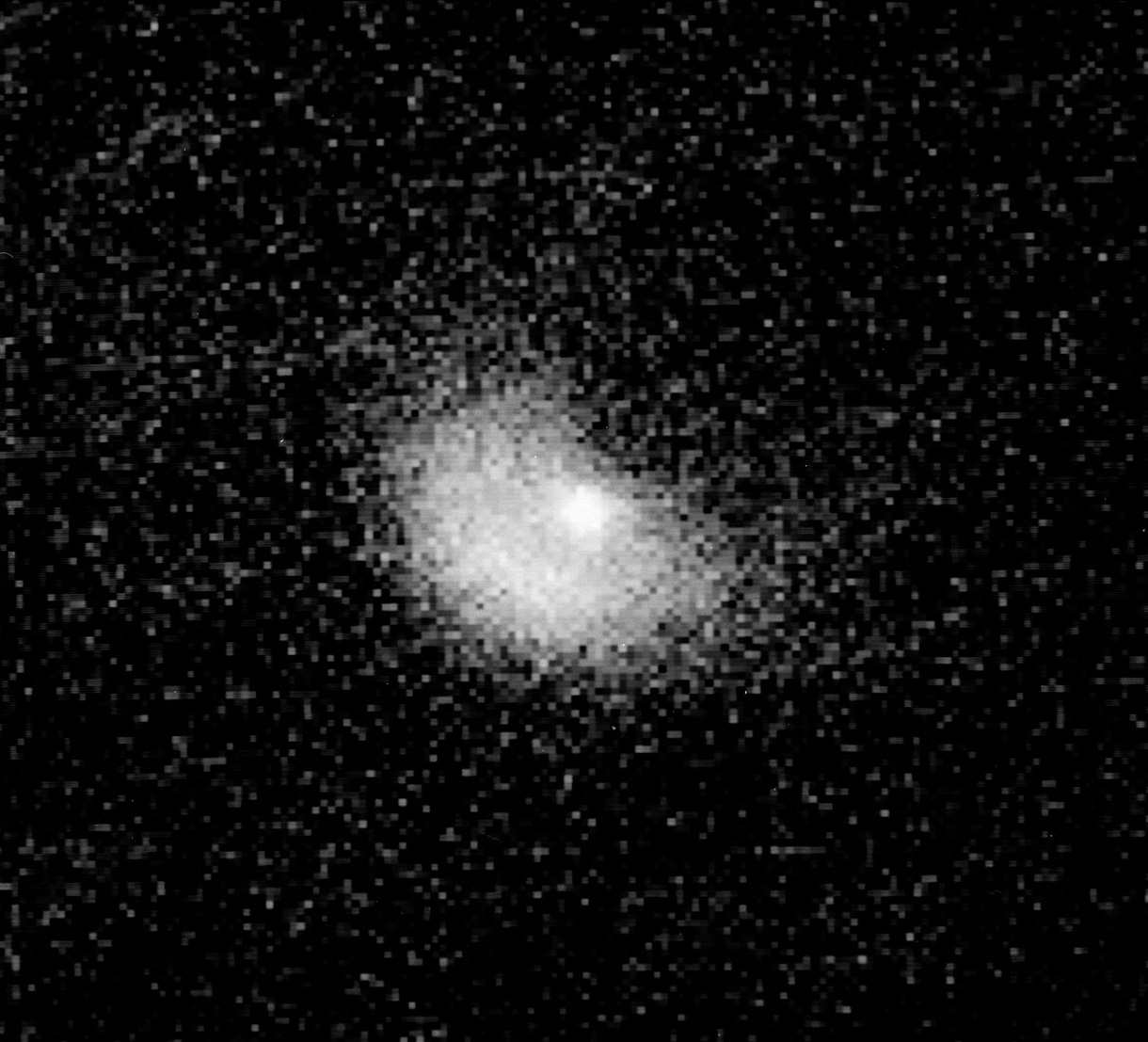
Meanwhile, following conjunction with the sun Halley emerged back into the morning sky in late 1986, initially around 12th magnitude but fading; in late April 1987 it underwent a distinct outburst to about magnitude 12 ½, during which I obtained my final observation. The last visual observation was made in February 1988 by David Levy with the 1.5-meter reflector on Mount Catalina in Arizona; the comet, slightly over 8 AU from the sun at the time, had faded to 17th magnitude.
By 1990 Halley had faded to 24th magnitude and appeared entirely stellar, however in February 1991 astronomers found that it had apparently undergone a dramatic outburst (at a heliocentric distance of 14 AU) a couple of months earlier, and was close to 19th magnitude and exhibiting a distinct coma 40 arcseconds in diameter (corresponding to a physical diameter of at least 300,000 km). The physical cause of such a large outburst at this large a heliocentric distance remains a mystery. In any event, the comet faded back to “normal” thereafter, and the final observations were obtained in images taken in early March 2003 by Olivier Hainaut and his team with the European Southern Observatory’s Very Large Telescope in Chile; the comet’s heliocentric distance at the time was 28.1 AU and it appeared as a stellar object of magnitude 28.
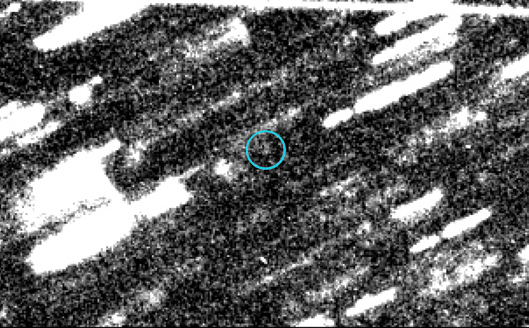
At this writing, Halley is just a few years away from aphelion, which takes place in December 2023 at a heliocentric distance of 35.1 AU. I am not aware of any observation attempts since 2003, although it should only be about a magnitude fainter at aphelion than it was then, and with the continuing improvements in instrumentation technology it would not surprise me if observation attempts then are successful. Regardless, Halley will then be starting its journey back into the inner solar system, and some of the present readers should hopefully see it when it once again shines in our nighttime skies in 2061. And, if I should happen to make it to the age of 103, perhaps I might even see it again as well.
More from Week 11:
This Week in History Special Topic Free PDF Download Glossary
Ice and Stone 2020 Home Page


